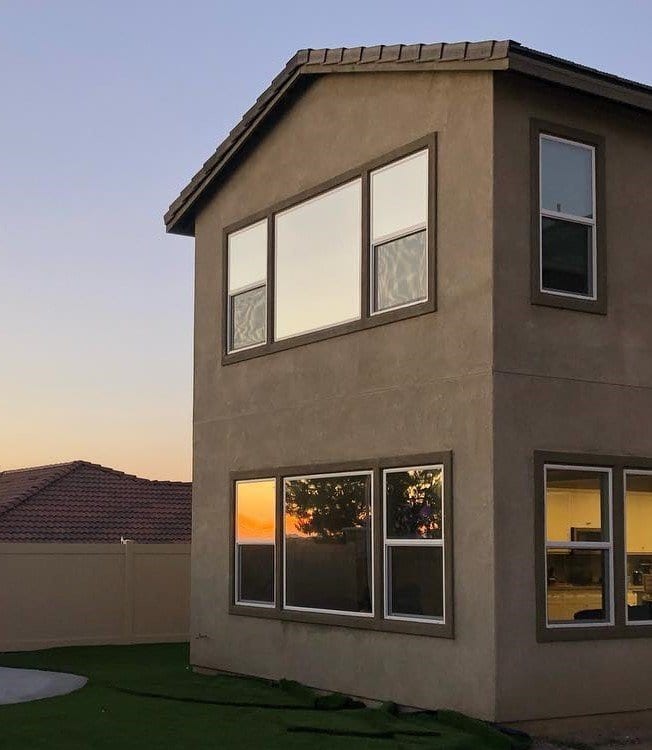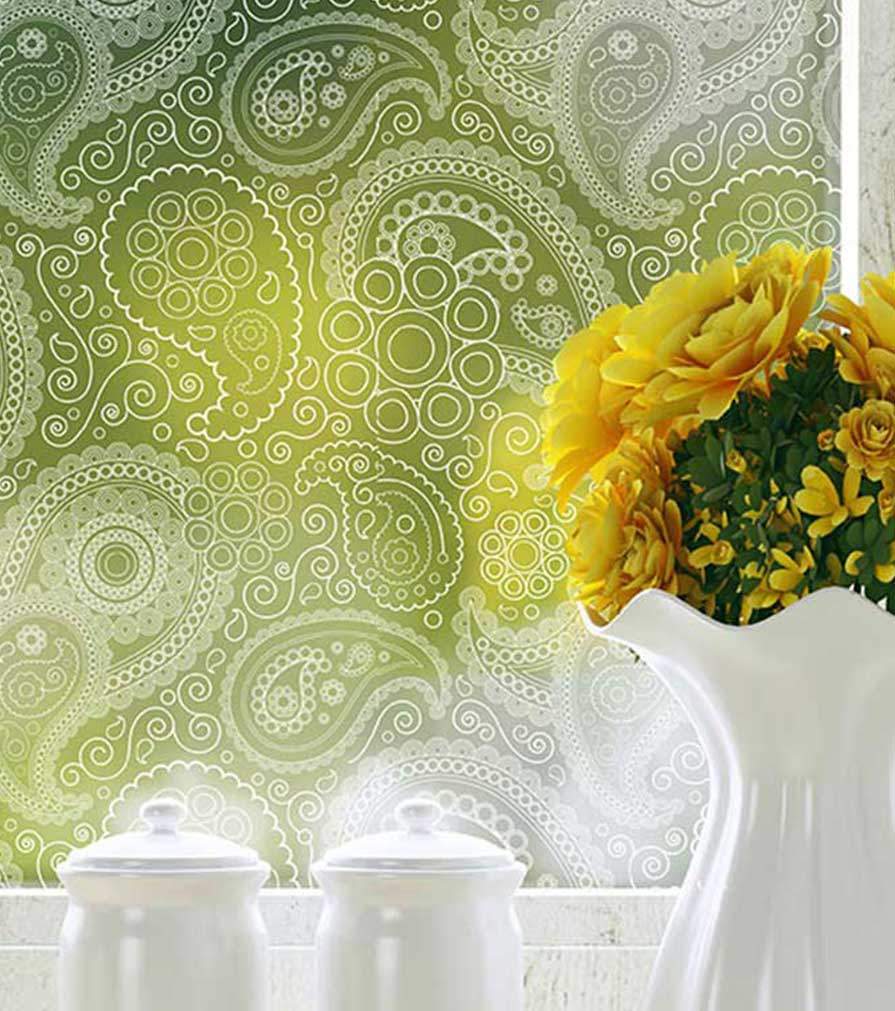
Home Window Film for Energy Savings
High-quality window film is designed with homeowners in mind. Contrary to its name “solar,” solar control film does not store energy like solar panels. However, it has a similar function in that it helps in increasing energy savings.
Solar Control window tinting film is an adhesive film applied to glass surfaces. As the sun’s rays hit the window, the window film acts as a “sunscreen” to reflect and regulate the levels of heat, light, and even UV rays entering the home or office. The amount of heat, light, and UV rays that are rejected depends on the type of window film you select. The best part about this window film is that you can still enjoy your beautiful views, unlike using a curtain.
For those looking for home window tinting near me or who are in the Riverside County, Orange County, or San Diego area, rest assured we have you covered.
Benefits of Home Window tinting
- Reduces heating and cooling costs
- Add Curb Appeal
- Improves old windows and makes them more energy efficient
- Window tinting services don’t require permits and are a 10th of the cost of window replacement
- Residential window film improves daytime privacy
- Glass windows are meant to prove views, and window films improve that view by reducing Glare.
- Let us help you reduce energy costs and improve the way your home feels.

Stop Artificial Turf from Melting
If you are like many water-wise homeowners who have transitioned to artificial turf, you’re already enjoying the benefits of easy maintenance and aesthetic appeal of artificial turf. However, most homeowners don’t realize that artificial grass can melt.
Glass Windows can cause an intense heat given off by the reflection of their home’s windows. Luckily you can apply high-performance turf shield window film to the outside our your windows, and voila…no more melting! Think of it as a magnifying glass effect.
Benefits of Turf Shield Home Window Tinting
- Stops artificial turf from melting.
- Prevent Siding from melting
- Stop Fencing from melting.
- Still enjoy your natural light.

Decorative & Frosted Window Films
Windows are the heart and soul of any home, allowing you to enjoy the views and natural light. However, having many windows can sometimes come with a few downsides, like limited privacy. Privacy window films like frosted window tinting film for added privacy or decorative window film if you want to add a touch to your style.
Benefits of Decorative & Frosted Film
- We are adding privacy without losing natural light.
- Add uniquely patterned film for creative style.
- Architectural films allow you to either restore a current look or add an all-new look without breaking the budget.
- Blackout window film options are available for daytime and nighttime privacy.

Skylight Window Tinting
Skylight window film reduces glare and helps improve energy efficiency while maintaining natural light. Home window tinting is a great low-cost solution to address skylights. We carry one-way mirror films to reduce ultraviolet rays to reduce fading that may be occurring. We also have decorative window film options to add a touch of style if that’s your thing. Homeowners, we have the highest quality films for your skylights.
Benefits of Skylight window tinting:
- Block Harmful UV Rays
- Reduce Heat Gain
- Lifetime Warranty
- Compatible with nearly all Glass Skylights
- Block the Sun’s Heat
- Protect upholstery

Security Window Film
Safety and security window films are truly unique. This film protects people from broken glass shards but, most importantly, makes it very difficult for any intruder to penetrate your home. These films have a proven track record of saving lives and property from intruders. It is important to note that if you need to break the glass from the inside, you can still do so since the sticky part of the film is facing the outside. This film is ideal for schools, churches, businesses, and homes!
Click here to watch this short video, and you’ll be amazed!
Benefits of Security Film
- It keeps glass together on impact and protects people from glass shards.
- It makes it very difficult for intruders to break the glass.
- Windows can still break from the inside should you need to get out through the window.
- Safety and Security Protection film mitigates break-ins.
- Commercial buildings around the country and here in San Diego, Encinitas, El Cajon, and Riverside County have benefited from commercial window film for security. If you live in Southern California and need local home window tinting services our corporate office can help.
Benefits of Skylight window tinting:
- Block Harmful UV Rays
- Reduce Heat Gain
- Lifetime Warranty
- Compatible with nearly all Glass Skylights
- Block the Sun’s Heat
- Protect upholstery
Frequently Asked Questions
Home Window Tinting Near Me Questions
HOW LONG DOES IT TAKE THE WINDOW FILM TO DRY?
HOW LONG DOES IT TAKE THE WINDOW FILM TO DRY?
One aspect to consider when talking about the drying time of window film is the time of year. Cold and non-sunny weather conditions can lengthen the dry-out time. Warm weather and direct sunlight exposure will shorten the dry-out time. If slow drying occurs, do not be alarmed. The trapped moisture will dry out completely.
Dry-out times can vary from a few days to several months. Due to their increased thickness, some safety and security window films will always have a more extended dry-out period. Thicker films and a less-than-perfect drying climate will lengthen the dry-out period.
Window film creates an efficient vapor barrier between the glass and the film. Your window tinting installer will remove as much of the mounting solution as possible using a squeegee during the installation process, although a small amount will remain. Trapped installation moisture can cause small water puddles and a slightly dirty look. This is normal and should be expected. This water and cloudy look will eventually dissipate. Do not attempt to pierce a water puddle during the dry-out period. Trying to stick a water puddle to drain moisture will damage your film. A warranty would not cover this damage.
CAN YOU APPLY WINDOW FILM OVER DECALS OR STICKERS ON GLASS?
CAN YOU APPLY WINDOW FILM OVER DECALS OR STICKERS ON GLASS?
Many windows, especially those on storefronts, have stickers, decals, burglar tape, and other items on the glass. Depending on the circumstances, these might have to be removed.
Your window tinting professional should discuss the potential problems and determine what to do with any decals. If they are not highly raised above the glass, window film can be applied to them. However, this will create a poorer bond on the decal than on the glass. More highly raised stickers should be scraped off.
Burglar tape and alarm contacts are also found on windows. Tape is usually only slightly raised above the surface of the glass. The film can be installed over such an irregular surface, but customers should be advised that the installation will not be tip quality. Alarm contacts, however, should be removed before applying the film but should not be done by the window film installer. It is better to ask you, the customer, to contact your security company to remove and replace the alarm contacts.
HOW DOES WINDOW FILM WORK?
HOW DOES WINDOW FILM WORK?
Most window films are applied to the inside glass surface of a window. As the sunlight hits the glass surface, four basic things occur:
- Sunlight hits the window, and a part of its energy is reflected away from the window.
- The glass absorbs some of the sun’s energy.
- A portion of the sun’s solar energy is transmitted thru the window film into the room.
- The window film absorbs part of the sun’s energy and is re-radiated in and out of the room.
Which tint is best for home?
Which tint is best for home?
Home windows are a bit more tricky, and homeowners and building owners have to consider the type of glass present. Unlike auto glass that’s tempered for safety reasons, home windows are not all tempered, which means they can be damaged if you or a window film installation company install the wrong type of window film.
The best film varies widely depending on your needs, contact us for a free quote, and we would love to help guide you in choosing the best film for your home.
What is the difference between a window tint and a privacy film?
What is the difference between a window tint and a privacy film?
Window tint and privacy film can be the same thing. Window films with a reflective side to them provide daytime privacy only, while privacy films like frosted options can provide daytime and nighttime privacy. However, remember that most privacy films will not allow you to see out during daytime hours.
The best film varies widely depending on your needs, contact us for a free quote, and we would love to help guide you in choosing the best film for your home.
WHAT ARE THE BENEFITS OF SOLAR CONTROL WINDOW FILMS?
WHAT ARE THE BENEFITS OF SOLAR CONTROL WINDOW FILMS?
- Reduces fading of carpets, upholstery, and interior furnishings
- Rejects from 98-99% of the sun’s harmful UV rays
- Reduces your energy bill, thereby helping to keep warmer in winter and cooler in summer
- Increases your comfort by helping to eliminate “hot spots.”
- Rejects up to 80% of the sun’s solar energy
- Reduces the sun’s glare
- Increases your level of privacy
- Enhances the appearance of a building by creating a uniform appearance
- Provides improved safety when glass is broken
The best film varies widely depending on your needs, contact us for a free quote, and we would love to help guide you in choosing the best film for your home.
What tint should I use for home windows?
What tint should I use for home windows?
The film you should use to tint your home depends on the solution you are after. Darker or more reflective films cut down visible light and reduce heat. The way both of these films work differs a bit. Darker, more neutral colors rely on absorption while reflective films work to reflect heat away from your windows; which one is right for you depends on the type of glass.
DEFINITIONS FOR UNDERSTANDING WINDOW FILMS?
DEFINITIONS FOR UNDERSTANDING WINDOW FILMS?
Below are a few definitions to help you understand how to choose the best window film for you:
- Total Solar Transmittance: The percent of incident solar radiation to be directly passed through a window system
- Total Solar Reflectance: The percent of incident solar radiation to be reflected by a window system
- Complete Solar Absorption: The percent of incident solar radiation to be absorbed by a window system
- Visible Light Transmittance: The percent of total visible light to be passed through a window system
- Visible Light Reflectance: The percent of total visible light to be reflected by a window system that can be seen visually
- Percent UV rays Transmittance: Percent of total ultraviolet light to be passed through a window system
- Percent of Total Solar Energy Rejected: The percent of incident solar energy rejected by a window system equals solar reflectance plus the part of solar absorption which is reradiated outward.
Is window tinting legal in San Diego?
Is window tinting legal in San Diego?
Home window tinting in San Diego and around the country is legal. However, some limitations vary from state to state for car window tinting. Automotive window tinting is regulated at the state level, and typically, you cannot tint your windshield at all. At the same time, the two front windows must maintain a certain level of shading to allow law enforcement to see into the car. The back half of your vehicle can have tint applied to any level without legal ramifications.
Can you tint house windows yourself?
Can you tint house windows yourself?
Yes. You can undoubtedly tint your windows. However, keep in mind that installing the wrong type of window film on your glass windows could spell disaster as you can cause the low-E coating to prematurely fail or even cause a thermal fracture.
What is the best tint for windows?
What is the best tint for windows?
We get this question a lot. The best film, in our professional opinion,d is the one that is safe for your glass and the one that also solves your daylighting, security, or heat issue. These are common issues our home window tinting films can solve.
What are the benefits of window tinting?
What are the benefits of window tinting?
Home window tinting offers a variety of solutions:
- Window tinting films reduce heat
- Provide added privacy with daytime and nighttime options
- Window films reduce glare
- Tinting Blocks harmful UV rays
- Window tint prevents fading of furniture and upholstery
- Security and protection films provide added security for your home by preventing vandals by slowing them down in the event of a break-in.







